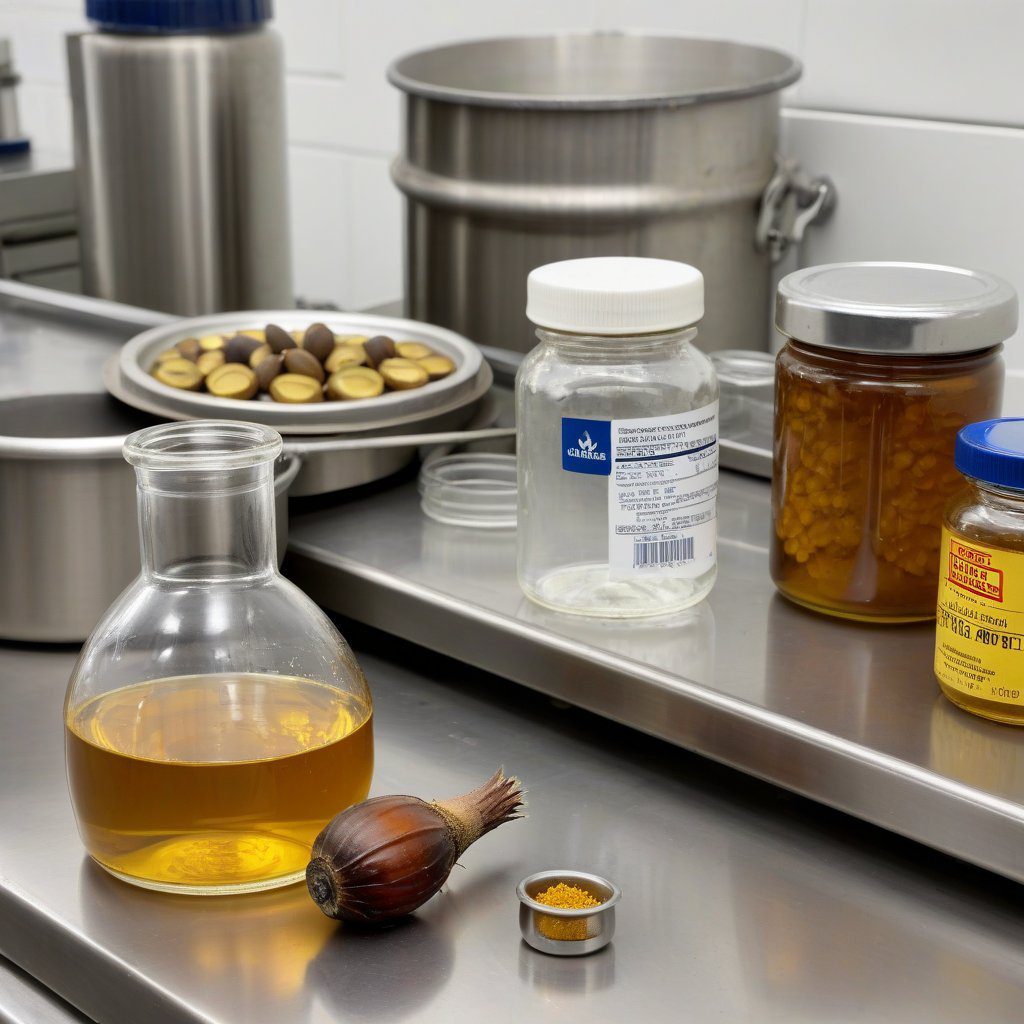How does regulatory compliance impact glycerol pricing? Regulatory compliance involves adhering to laws and regulations that govern the production and sale of glycerol, affecting its pricing due to factors like production costs, quality standards, and market access.
In today’s dynamic market, understanding how does regulatory compliance impact glycerol pricing? is crucial for companies sourcing glycerol. This post will unravel the intricate relationship between compliance and pricing, revealing how regulations can influence costs and supply chains.
Dive in to discover the factors that drive glycerol prices up or down and learn strategies to navigate the complexities of compliance in your sourcing decisions. By the end, you’ll have a clearer perspective on the importance of choosing a reliable glycerol supplier like Diplomata Comercial, ensuring not just compliance but also competitive pricing.

How Does Regulatory Compliance Impact Glycerol Pricing?
When it comes to the glycerol market, understanding Glycerol Regulations is essential for navigating pricing dynamics. Regulatory compliance encompasses a range of standards and requirements that govern the production and distribution of glycerol. Companies must familiarize themselves with these regulations to remain competitive and compliant.
Key regulations include environmental standards, safety protocols, and quality assurance measures. For businesses, staying updated on these regulations is crucial, as non-compliance can lead to hefty fines and increased operational costs. Additionally, compliance can influence market perception and customer trust.
Essential Concepts of Regulatory Compliance in the Glycerol Market
Regulatory compliance in the glycerol industry involves adhering to both local and international standards. These standards are set to ensure product safety, environmental protection, and fair trade practices. For example, the FDA and EPA in the U.S. impose regulations that affect glycerol production.
Understanding the significance of these regulations is crucial for companies looking to navigate the complexities of glycerol pricing. Being compliant not only ensures legality but also enhances market reputation, making it easier for companies to establish themselves as reliable suppliers.
The Strategic Importance of Compliance for Glycerol Pricing
Adhering to regulatory standards can lead to significant benefits for glycerol pricing strategies. First, compliance often results in cost savings through efficient operations and reduced penalties. Companies that invest in compliance are better positioned to negotiate prices with suppliers effectively.
Moreover, compliance enhances trust among clients and suppliers, creating a more stable business environment. Companies that are recognized as compliant often enjoy a competitive edge, allowing them to leverage their reputation in negotiations.
Key Criteria for Evaluating Glycerol Suppliers in Compliance
When searching for a glycerol supplier, companies should carefully assess compliance status. Key criteria include certifications, quality assurance practices, and adherence to international standards. For instance, suppliers with ISO certifications are often more reliable, as they meet rigorous quality benchmarks.
Additionally, businesses should inquire about the supplier’s history of compliance and any past issues. This information can provide insights into their reliability and commitment to maintaining high standards in glycerol production.
Step-by-Step Process to Ensure Compliance in Glycerol Procurement
To ensure compliance in glycerol procurement, companies should follow a structured approach. Start by conducting thorough research on regulatory requirements specific to glycerol in your region. Next, maintain meticulous documentation of all compliance-related activities.
Supplier audits are also essential. Regularly assess suppliers to ensure they adhere to compliance standards. Implement ongoing compliance checks to identify any potential issues before they escalate.
Advanced Strategies and Best Practices for Glycerol Compliance
Staying ahead of regulatory changes is vital for companies in the glycerol sector. One effective strategy is to invest in training for employees on compliance topics. This ensures that everyone is informed about the latest regulations and best practices.
Another best practice involves leveraging technology to streamline compliance processes. Automated systems can help track compliance metrics and generate reports, making it easier to stay compliant without increasing labor costs.
Common Pitfalls in Glycerol Compliance and How to Avoid Them
Companies often encounter pitfalls in glycerol compliance that can lead to increased costs. One common mistake is neglecting to stay updated on changing regulations. This can result in violations and fines, impacting pricing strategies.
To avoid these issues, it’s essential to establish a compliance monitoring system. Regularly review regulations and conduct internal audits to ensure adherence. By being proactive, companies can navigate the regulatory landscape effectively.
Case Studies and Real-World Applications
For instance, a small glycerol manufacturer in the Midwest faced challenges with new environmental regulations. They managed to navigate these regulations by investing in eco-friendly production methods that ultimately reduced their compliance costs.
Similarly, an international company sourcing glycerol from local suppliers in Brazil had to adapt to varying compliance standards. They established a compliance framework to ensure that their pricing strategy remained competitive while meeting local regulations.
A startup in the personal care industry contemplated using glycerol but was uncertain about regulatory requirements. With guidance on compliance, they decided to proceed, finding that glycerol offered cost-efficient benefits over less regulated alternatives.
A glycerol distributor under pressure from retailers to lower prices found it challenging due to increased operational costs from compliance measures. By transparently communicating the impact of these regulations to clients, they justified their pricing while retaining business.
Finally, a food manufacturer looking to switch to glycerol sought strategies to mitigate risks associated with compliance. They developed a comprehensive risk management plan that included regular compliance training and established partnerships with reliable suppliers like DIPLOMATA COMERCIAL.
How Can I Help You
Understanding how regulatory compliance affects glycerol pricing is essential for businesses navigating the chemical market. At DIPLOMATA, with over 20 years of experience, we recognize that stringent regulations can significantly influence costs, making it crucial for companies like yours to stay informed.
As a renowned manufacturer and supplier of high-quality glycerin, we ensure that our products not only meet but exceed industry standards, which can impact pricing strategies.
Moreover, compliance often necessitates investments in quality assurance and sustainable practices, which may translate into higher initial costs but ultimately lead to better long-term value.
Your success in the B2B sector—whether in HPPC, pharmaceuticals, or food ingredients—relies on reliable suppliers who understand these dynamics.
At DIPLOMATA, we pride ourselves on our excellent customer service and high-performance materials, helping you navigate these complexities while ensuring that your business thrives amidst regulatory challenges.
FAQ
How do changes in regulatory compliance affect glycerol prices?
Changes in regulatory compliance can significantly influence glycerol prices due to the increased costs of production and distribution. For instance, stricter environmental regulations may require manufacturers to invest in cleaner technologies, raising operational costs. These additional costs are often passed onto consumers, leading to higher glycerol prices. Moreover, compliance with international standards can restrict supply, further driving up prices. Businesses must stay informed about regulatory changes to anticipate price fluctuations and adjust their procurement strategies accordingly.
What specific regulations impact glycerol pricing the most?
Several regulations can impact glycerol pricing, including environmental laws, health and safety standards, and trade regulations. For instance, regulations concerning the sourcing of raw materials can affect availability and cost. Additionally, compliance with safety standards in manufacturing can necessitate upgrades to facilities, leading to increased production costs. Understanding the specific regulations that apply to glycerol production in your region is crucial for businesses to navigate pricing effectively and remain competitive in the market.
How can businesses mitigate the impact of regulatory compliance on glycerol prices?
Businesses can mitigate the impact of regulatory compliance on glycerol prices by implementing efficient supply chain management practices and investing in compliance technologies. By staying ahead of regulatory changes and adapting processes proactively, companies can reduce potential cost increases. Additionally, exploring alternative sourcing options and maintaining strong relationships with suppliers can help secure better pricing. Regular training for staff on compliance requirements can also minimize risks associated with non-compliance, ultimately stabilizing glycerol pricing.
Are there any financial incentives for complying with glycerol regulations?
Yes, there are several financial incentives for complying with glycerol regulations. Many governments offer tax credits, grants, or subsidies for companies that adhere to environmental and safety standards. Compliance can also enhance a company’s reputation, attracting more clients and potentially leading to increased sales. Additionally, businesses that invest in sustainable practices may qualify for lower insurance premiums and reduced operational costs in the long run. Understanding available incentives can help companies leverage compliance as a strategic advantage.
What role does international trade play in glycerol pricing due to compliance?
International trade significantly influences glycerol pricing, particularly regarding compliance with different regulatory standards across countries. Import and export regulations can affect supply chain dynamics, leading to price volatility. For example, if a country imposes strict compliance measures on imported glycerol, it may result in higher tariffs or barriers to entry, pushing prices up. Companies engaged in international trade must be aware of varying compliance requirements to optimize their pricing strategies and remain competitive in global markets.
How often do regulatory changes occur that affect glycerol pricing?
Regulatory changes affecting glycerol pricing can occur frequently, often driven by shifts in government policies, environmental concerns, and public health initiatives. These changes can be unpredictable, ranging from minor adjustments to major overhauls of existing laws. It’s essential for businesses to monitor regulatory developments regularly, as even small changes can lead to significant price impacts. Engaging with industry associations and regulatory bodies can provide valuable insights and help businesses stay informed about upcoming changes.
What are the long-term effects of regulatory compliance on glycerol pricing?
The long-term effects of regulatory compliance on glycerol pricing can include increased stability in pricing structures, as compliant companies often face lower risks of penalties and disruptions. However, initial compliance costs may lead to higher prices in the short term. Over time, companies that invest in sustainable practices and technologies may benefit from reduced operational costs and increased market demand for compliant products. This can lead to a more predictable pricing environment, benefiting both producers and consumers in the glycerol market.





